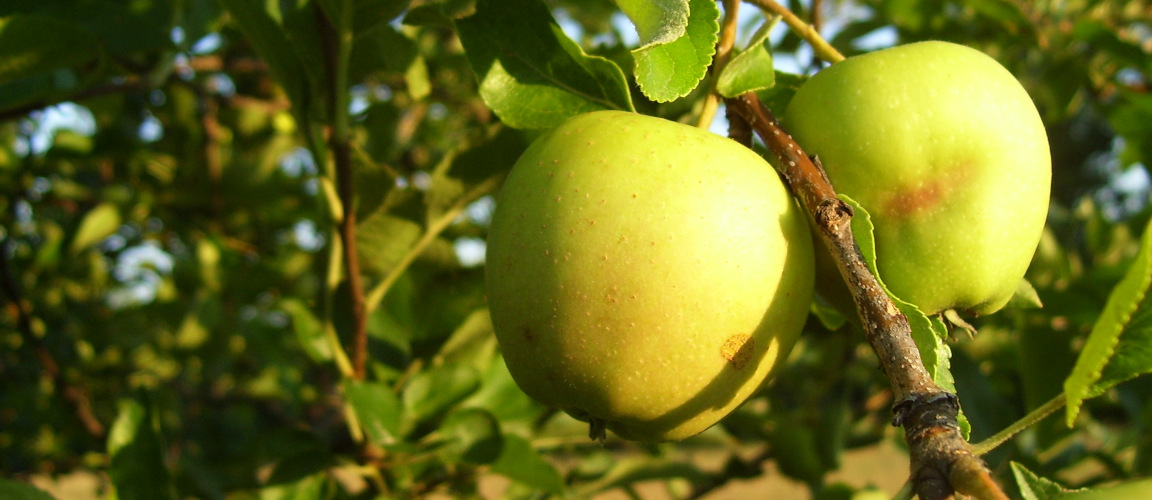'Red Delicious' OG apples are available as of 10/16/21! Contact for pricing and availability.
About the Orchard

The Farr Orchard is a small, organic apple orchard in Troy, Maine operated by Andrew Farr. (The orchard shares ground with the Farr Homestead, our family's business selling organic produce, seeds, birds, and eggs. You can view the farm's website at http://www.farrhomestead.com.)
As of 2020, the orchard is in its second year, with 21 grafted trees in the orchard and another 50 in the nursery. Fruit cropping is expected to begin in 2025, with some varieties becoming possibly becoming available a year or two sooner than that. A row of existing apple trees on the property is my practice area for pruning and thinning techniques, as well as being the source for many of the photographs on this web site. Apples from these trees may be available for sale in limited quantities in the next year or two; any updates will be posted on this page.
A key feature of the apple orchard management structure in the Farr Orchard will be maintaining a healthy orchard understory. Apple trees grow naturally in hedgerows along the edge of forests, where the ground is usually covered with wildflowers and tall grass. This benefits beneficial insects and pollinators by providing habitat and keeps the soil fertile for the tree, which in turn supports better fruit size and cropping when applied to an orchard. Tree rows will usually be mowed about twice a year to maintain the same perennial wildflower domination - once shortly after blossom, around July; and again before harvest begins, in mid to late September. In addition to the mulching effect caused be cutting the grass at these key points, wood chip mulch and gravel will keep the root system of the trees healthy and free from excessive weed pressure, while not harming surrounding plants. This will promote genetic diversity in the orchard.
Along the same principles of genetic diversity, the Farr Orchard's apple varieties are chosen from a wide range of heirloom apples like Maine's Black Oxford or Canadian Strawberry, and little-know modern apples with exceptional flavor, such as Frostbite, Chestnut Crab, or Keepsake. A disease-resistant variety or two, such as Red Free, completes the range of types represented in the orchard. At present, there are 25 different apple varieties in the orchard, with more to come in following years. One acre of the orchard is devoted to keeping a collection of these apples, with each variety usually having three trees to represent it. Once these trees are all at bearing age, another acre or two will be planted with three or four of the best growing and most popular varieties. For estimated availability dates and a complete listing of the apple varieties in the orchard, see the apple variety page.
The last major management point in most apple orchards in spraying. In order to provide high-quality apples, I plan to spray on a minimal schedule that is mindful of pollinators and beneficial insects. Sprays will consist of refined kaolin clay and neem oil to target pests that bore into fruit after blossom drop, such as curculio and apple codling moth; Bt, a protein crystal that is aimed at killing leaf-eating insects such as leaf rollers; and tree system strengthening sprays, such a fish oil or liquid kelp. Trap trees or especially susceptible varieties may be sprayed with a beneficial nematode to kill pupating larva of apple pests in the soil. Sticky traps will also target certain flying pests at the edges of the orchard. A large amount of this spray strategy is based on the principles in The Apple Grower by Michael Phillips, and his excellent work regarding apple orcharding in a way that does not harm surrounding animals and plants. Once trees come into bearing, I will probably adjust these sprays for our location and pest circumstances.
